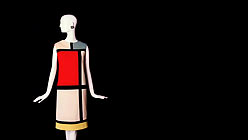There was a time when all clothing was “custom made,” sewn at home or ordered from a local tailor or dressmaker. Today, most clothing is purchased “ready made,” from department stores or boutiques, or discount big-box retailers like Wal-Mart. Only the very rich, the very poor, recent immigrants from the Third World, and London bankers still have their clothes made for them. We’ve largely lost, or discarded, this personal relationship between the client and the artisan/producer. We’ve gone from being clients who participate in a creative process to consumers who purchase designers’ ready-made ideas.
Couture is a paradox. As a concept, couture can only exist in an industrialized society, where things are purchased “off the rack,” and not created, one by one, for the client in an atelier. Couture’s value lies in its distance from the ordinary. And yet couture is in danger of being extinguished by the very society that created it. Year by year, the ranks of skilled artisans capable of producing “couture” quality goods diminishes. As the cost of a couture garment rises, the client base shrinks. Today, a couture suit can cost as much as a luxury car — it is not uncommon to spend $50,000 on a Chanel suit — and a ball gown comes with a six-figure price tag.
Yves Saint Laurent, the subject of a grand retrospective at the de Young Museum in San Francisco, was the last of the great couturiers. He belonged to the last generation of couture designers who could still rely on a large and loyal client base. When Saint Laurent first entered the trade, it was still possible for a designer to support his house (his atelier, his salesgirls, his business managers) with the proceeds from his couture business. Today, due to the high cost of couture goods, the design houses survive — and thrive — on licensed goods, on branded perfumes, lipsticks, shoes, and other sundries. The Parisian designers lose money on their couture lines, and recoup it, in spades, through a host of “affordable luxuries” aimed at the mass market.
Saint Laurent’s career bridges the transition between these two periods. When Saint Laurent first began, most French consumers either made their own clothes at home, or ordered their clothes “custom” from local tailors or dressmakers. By 2002, when Saint Laurent retired, most French consumers purchased their clothes “ready made.”
The pieces included in this retrospective track these changes in consumer culture. Saint Laurent’s earliest pieces display a strict, classical formality. They show off the atelier’s formal skills and attention to detail. As the years progress, Saint Laurent’s designs draw increasingly from the street, they become more atmospheric, less formal. The emphasis moves away from the atelier’s impeccable formal skills, and towards showcasing Saint Laurent’s singular vision. The house’s expertise is never in question, but the mood shifts.


